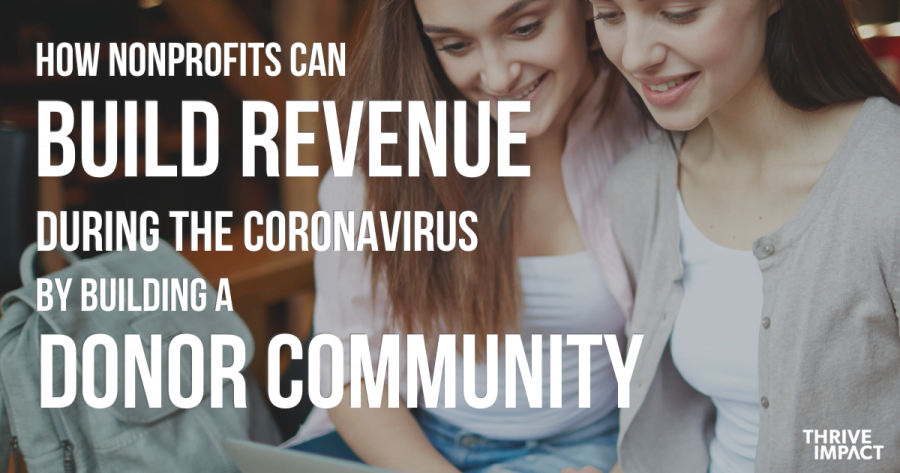We’re living in a time when there’s no playbook to follow. This is more than just any recession; it comes with many new and unknown variables. The good news: You can (and should) still fundraise! Many of the same tactics you use in normal circumstances still apply, with direct, personal relationship-building as the foundation to any successful fundraising strategy.
Here are three fundamental principles you should put into action right now:
#1: Communicate with your audience regularly
Some nonprofit execs we’ve talked to say they’re afraid to “disrupt the flow” of daily life, or they’re worried donors are tapped out, or they don’t want to come across as insensitive. The truth is, you should never stop fundraising. If ever there were a time to ask, it’s when you’re in crisis recovery.
Still, some leaders think they should limit or even decrease their messages. The data says different: Organizations who communicate the most (via email, Zoom, phone calls, etc.) have the most success with donor retention, giving, and loyalty.
#2: Be true to your mission
Explain your need simply, make an easy ask, and make both feel urgent. Everyone seems focused on the pandemic at the moment, but there is still room for other worthy missions to get support. The people who need your services didn’t stop needing help just because there was an outbreak — indeed, many of them need it more than ever.
Our friends at
NextAfter identified several key messaging strategies in their nonprofit fundraising research, with varied results:
Natural fit: Frontline organizations who are working on healthcare, supplies, and resources to address the covid-19 outbreak have an organic story to tell. As a result, their close connection to the crisis has shown a positive increase in their fundraising. These nonprofits are in the special category of timely response to an immediate crisis, and they deservedly get special notice.
Unrelated to the crisis: Organizations that have tried to squeeze covid-19 into their messaging — even though they don’t have a clear connection and their mission is distant from outbreak response — have struggled to raise money. Their fundraising efforts, with a contrived connection to the virus, have seen a decrease of 40%. The lesson: Donors quickly become alienated if your message feels artificial, so don’t force it.
Loose connection: Lots of nonprofits who aren’t on the front lines can still present an authentic message that relates to the crisis and resonates with donors. Many mission focus areas are relevant to helping people get through tough times no matter what they are, and this is certainly one. The data shows that nonprofits who shared an accurate and sincere picture of their need and role in the crisis (whatever it may be) raised as much as frontline organizations did.
#3: Establish authentic relationships
Above all, strong fundraising = strong relationships. Donors want and need two things in return for their gift: Belonging and significance. Your goal shouldn’t be to ask people for money; it should be to build a loyal group of people who are uniquely focused on your vision to fix up your corner of the world.
Your responsibility is to make that vision big, inspiring, and essential. Make your donors want to support you long-term, not just ask-by-ask. The pledge model, in which donors commit to give for an arbitrary time period (e.g., a holiday pledge drive) is quickly getting stale. You’re better off creating an opportunity for people to invest in your organization long-term, which is really an investment in you and the relationship you have fostered with them. Help them understand the need to give “until the problem is solved”.
Those very relationships are crucial to building your donor community. Think about two main groups that make up the spectrum of giving: those who have donated in the past and those who currently support you in one group, and those who you hope will donate soon in another.
Strengthen current donor relationships. Reach out and personally connect with people who have already given you support. Have one-on-one calls with as many as possible, or small group engagements for folks at a similar level of support. Thank them sincerely. Plan a simple check-in and ask friendly, empathetic questions, like “How are you doing? How are you impacted? How can we be helpful?” You don’t need to make a formal ask. Let their giving plans come up naturally in the course of conversation, and stay focused on the meaningful connection they have to your organization.
Find new donors. Don’t think you need to pause outreach or stop asking for money just because the circumstances feel all-consuming. There are certainly more people out there who are willing and able to help your nonprofit. Even if you’re not on the front lines of the crisis, your work is important — and the data shows that donors still have an appetite to support worthwhile causes. Also, while it’s certainly important to focus on big gifts, don’t underestimate the value of crowdfunding and low-dollar grassroots donations. Segment your audience based on the approximate levels of support you’re asking for and plan outreach accordingly. Develop your fundraising strategies to include matching funds agreements, peer-to-peer campaigns, and social momentum. Bring new donors into the community with the same level of care and attention you give people who already support you.



